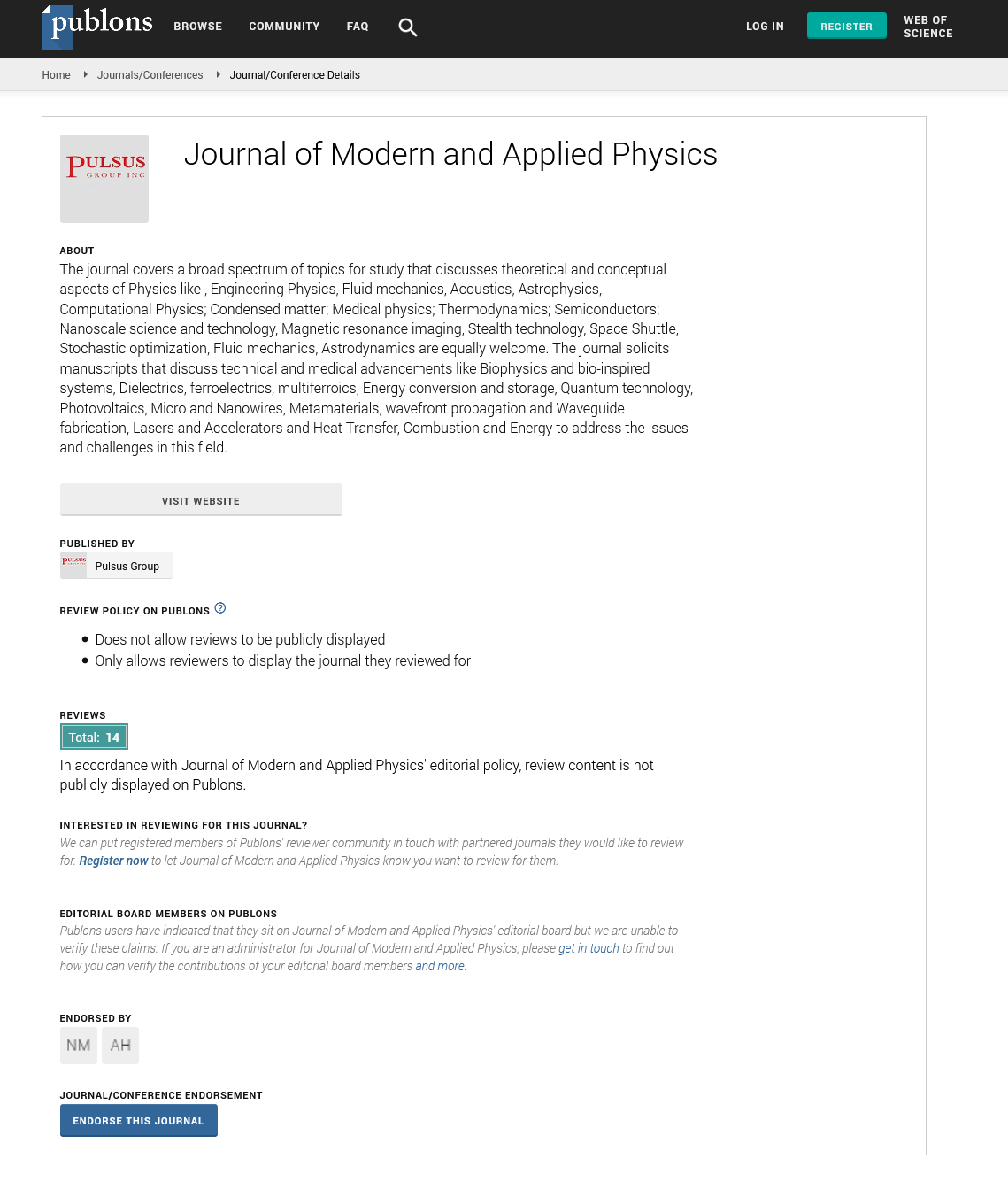Friction and wear reduction by surface patterning – Improved fundamental understanding by advanced material characterization
Received: 06-Nov-2017 Accepted Date: Nov 09, 2017; Published: 16-Nov-2017
Citation: Rosenkranz A. Friction and wear reduction by surface patterning – Improved fundamental understanding by advanced material characterization. J Mod Appl Phys. 2017;1(1): 16
This open-access article is distributed under the terms of the Creative Commons Attribution Non-Commercial License (CC BY-NC) (http://creativecommons.org/licenses/by-nc/4.0/), which permits reuse, distribution and reproduction of the article, provided that the original work is properly cited and the reuse is restricted to noncommercial purposes. For commercial reuse, contact reprints@pulsus.com
Tribology which includes friction, wear and lubrication is an interdisciplinary research topic involving different disciplines ranging from fundamental physics and chemistry to material science and even biology. In all loaded and moving parts/machine components, tribology is essential since it determines the energy efficiency, the sustainability and the reliability of the component and the entire process [1]. Researchers around the globe have tried to tailor tribological properties to improve the aspects. Friction and wear can be significantly improved by adding a lubricant between the rubbing surfaces which can lead to a complete separation of the involved surfaces.
In addition to that, the rubbing surfaces can be coated with a material having a low shear strength thus reducing the resulting shear force and consequently the coefficient of friction. Furthermore, the coating can be wear resistant to make it last longer. Besides that, the design of mechanical components as well as the material selection can greatly influence friction and wear. Finally, by changing the surface topography/roughness, the real contact area can be modified which is directly proportional to the resulting frictional force and consequently the coefficient of friction [2]. Form the literature, it is well known that, in contrast to technical surfaces with a stochastical surface roughness, deterministic surfaces having a certain periodical arrangement of surface features are beneficial to reduce friction and wear. To fabricate those deterministic surfaces, various techniques ranging from lithography over embossing/micro-coining to laser-based methods can be used [2].
In this context, laser surface patterning has shown to be an interesting and promising approach since this technique is able to generate different pattern geometries with features size in the micron and sub-micron range in a reasonable amount of time and in an efficient as well as sustainable way. The friction and wear reduction induced by patterned surfaces can be traced back to a reduced real contact area [3]. Additionally, the surface patterns can effectively store produced wear particles thus reducing abrasive wear. Furthermore, the surface patterns can induce a reservoir effect which means that oil can be stored in the surface textures. Once wear starts to occur, this oil can be transferred to the contact area thus minimizing the risk to obtain starved lubrication [4]. In case of sufficiently thick oil films, the surface patterns can build up an additional hydrodynamic pressure which leads to an increased load-bearing capacity [5].
Irrespective of the use of surface patterns or coatings to positively affect the tribological performance, it becomes more and more important to understand the material’s properties that greatly affect the resulting frictional behaviour. A detailed study of the surface chemistry as well as the microstructure close to the surface can give important hints to explain observed tribological phenomena. To study the surface chemistry, it is highly recommendable to choose a multi-technique approach since just one technique is not able to quantify the entire surface chemistry on all scales [6].
A combined approach of Raman spectroscopy, infrared spectroscopy, X-ray photoelectron spectroscopy, atom probe tomography and time of flight secondary ion mass spectroscopy may be helpful to fully explore the surface chemistry from the micron scale down to the atomic scale. With respect to the microstructure, it is important to study grain sizes, grain sizes distributions, the crystallographic texture as well as the defect situation such as dislocation densities. Recommended technique for those purposes are focused ion beam microscopy, transmission electron microscopy, X-ray diffraction and electron back scatter diffraction. Moreover, it is worth to investigate the mechanical properties such as hardness on different scales. In this regard, different techniques to measure hardness ranging from Vickers hardness to nanoindentation are available to study the mechanical properties at micron and nanometre scale. To really understand the ongoing processes in tribological contacts, the entire range from surface chemistry over microstructure to mechanical properties needs to be studied and understood at different sizes scales ranging from millimetres/microns to nanometres and even the atomic level. To accomplish that, just a multi-method approach can help to fully characterize the phenomena happening on different scales.
REFERENCES
- Holmberg K, Andersson P, Erdemir A. Global energy consumption due to friction in passenger cars. Tribology International. 2012;47:221-34.
- Gachot C, Rosenkranz A, Hsu SM, et al. A critical assessment of surface texturing for friction and wear improvement. Wear. 2017;372:21-41.
- Rosenkranz A, Reinert L, Gachot C, et al. Alignment and wear debris effects between laser-patterned steel surfaces under dry sliding conditions. Wear. 2014;318:49-61.
- Rosenkranz A, Heib T, Gachot C, et al. Oil film lifetime and wear particle analysis of laser-patterned stainless steel surfaces. Wear. 2015;334:1-12.
- Fowell MT, Medina S, Olver AV, et al. Parametric study of texturing in convergent bearings. Tribology International. 2012;52:7-16.
- Rosenkranz A, Reinert L, Gachot C, et al. Oxide Formation, Morphology, and Nanohardness of Laser-Patterned Steel Surfaces. Advanced Engineering Materials. 2015;17:1234-42.





